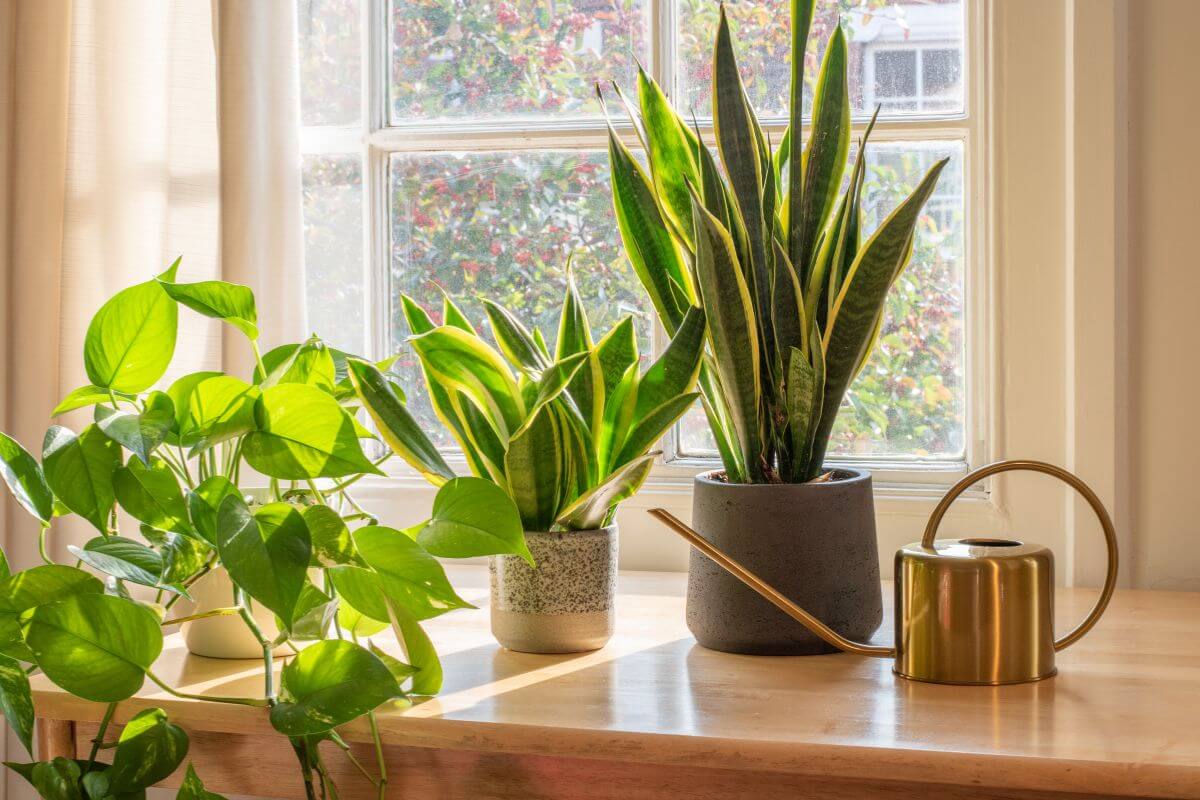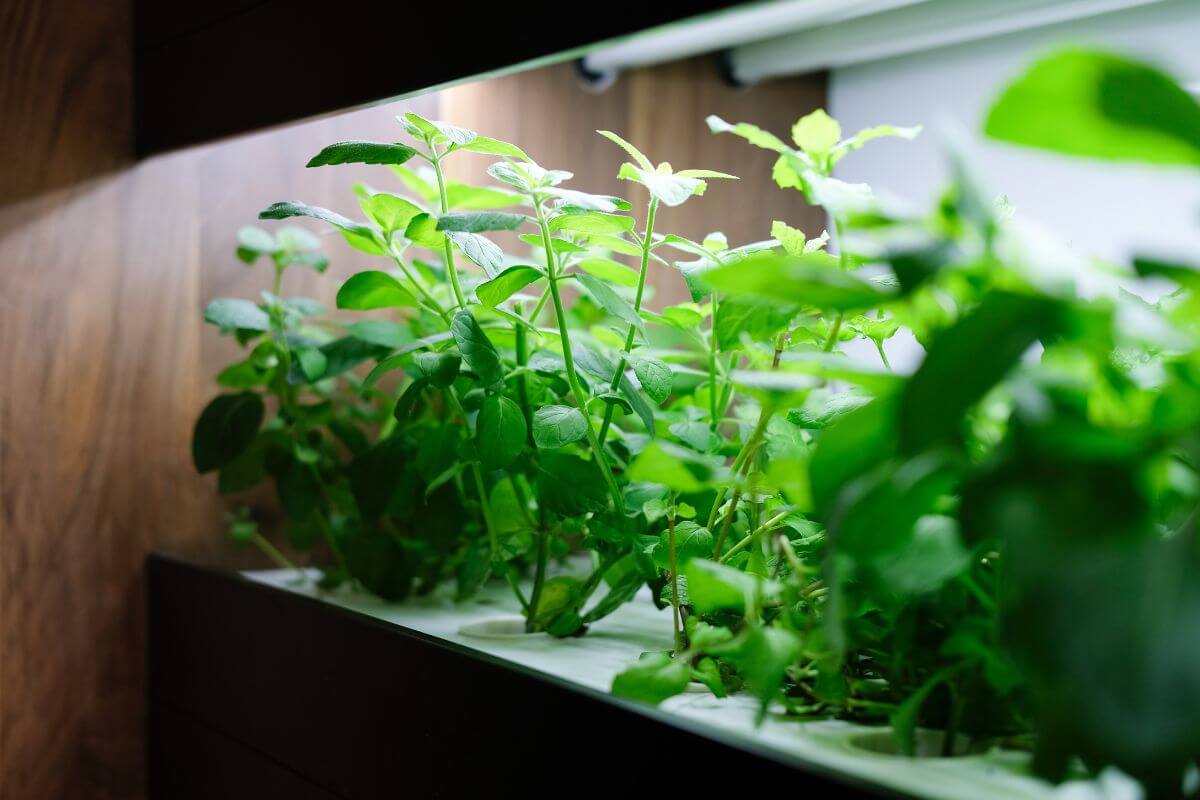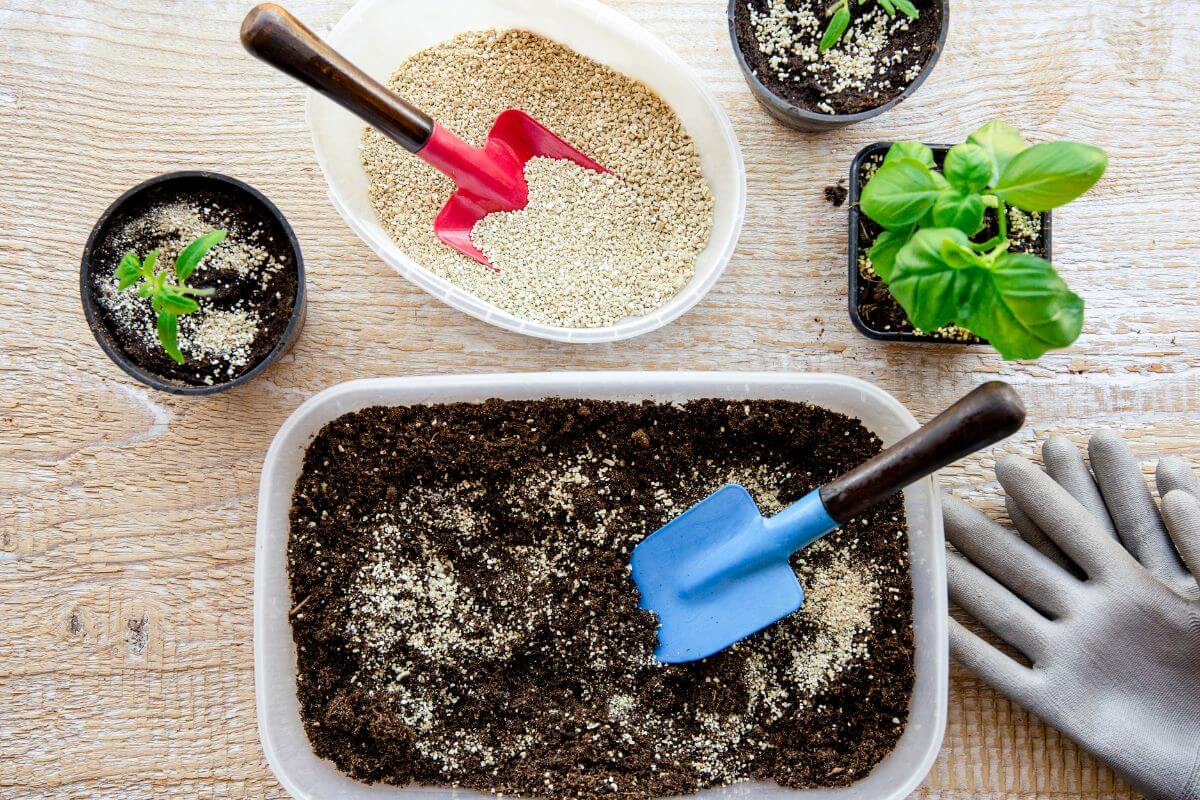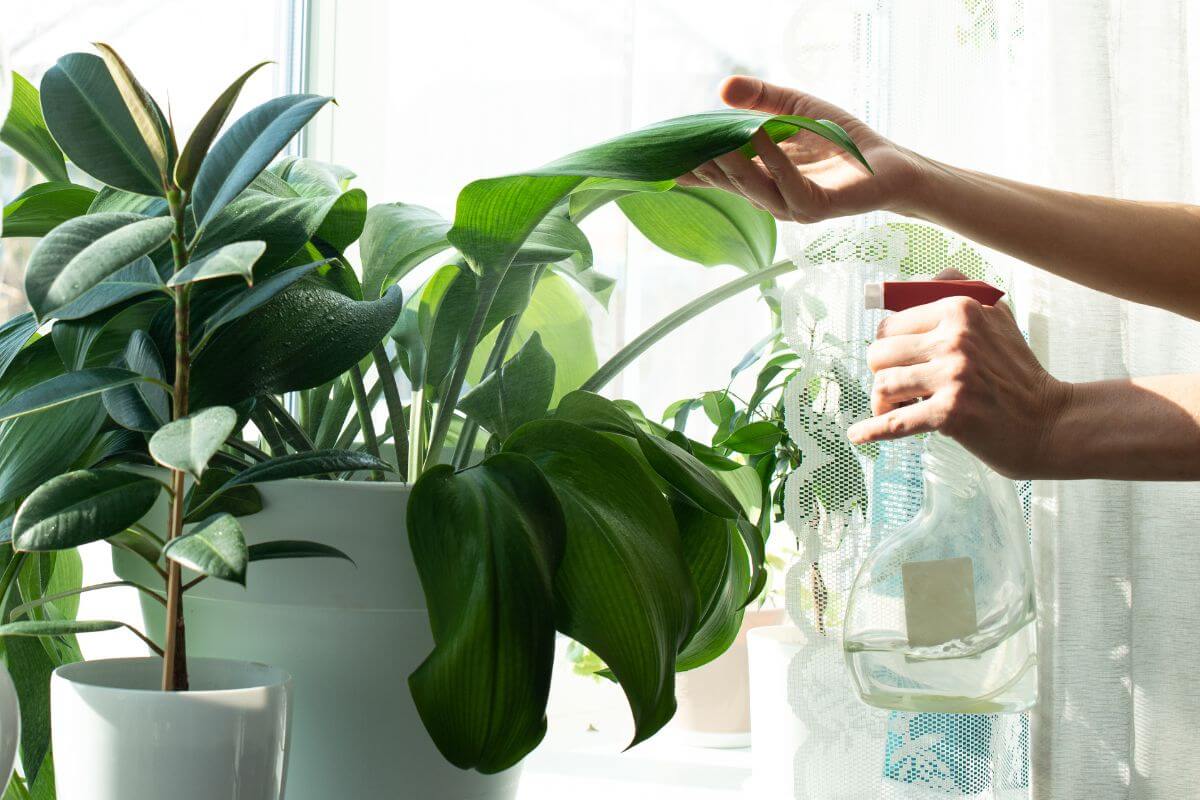Are you in an apartment building with no outdoor space for a garden? Don’t worry! Growing plants indoors is easy even if you’re new to gardening.
Today’s indoor smart garden options make it easier than ever. You just need to learn the basics and gather the right tools.
I’ve put together everything you need to know to start your own indoor garden. We’ll cover the basics of growing houseplants, what they need, and the various indoor gardening systems available.
5 Key Takeaways on Indoor Gardening for Beginners
- Plants require more than just water to thrive. Sunlight, carbon dioxide, a growing medium, along with minerals and nutrients are all vital for their development.
- Traditional soil or hydroponic systems provide plants with access to necessary nutrients for growth. Choosing the right growing medium for your plants is key to keeping them healthy.
- Plants require various minerals like nitrogen, phosphorus, and potassium for healthy growth and development.
- Factors like light source, humidity levels, choice of plants, growing medium, containers, and watering techniques are vital for successful indoor gardening.
- Smart Soil, Hydroponics, Aquaponics, and Aeroponics offer promising options for efficient indoor gardening.
What Are the 5 Basic Things That Plants Need to Grow?
Plants are not entirely dependent on water alone for their survival. Let’s determine what is necessary for supporting a lush and vibrant plant life.
Here are the five essentials for plant growth:
- Sunlight – Plants rely on sunlight for energy through photosynthesis. A lack of adequate light will lead to issues such as yellow or brown leaves. This is because they are not able to make the amount of food they need.
- Water – Plants need water to absorb nutrients and regulate temperature and humidity for growth just like us.
- Carbon Dioxide – Plants use carbon dioxide to produce oxygen through photosynthesis. This forms an important part of the air cycle between humans and plants.
- Growing Medium – Soil is the traditional growing medium as it provides roots access to nutrients. Hydroponics use nutrient-filled water and other mediums such as rock wool and perlite in place of soil.
- Minerals and Nutrients – Plants require minerals like nitrogen, phosphorus, and potassium, among others, for healthy growth and development.
Now that we understand these basics, let’s explore how to set up an indoor garden for your home.
What Should My Indoor Garden Have?

Looking for the perfect spot for your indoor garden? Not to worry. Indoor gardens offer versatility with their space-saving design as they can fit snugly into any corner of your home.
Balconies are a good option for apartment dwellers as a source of sunlight. Let’s explore the factors that guide the choice of a suitable location for your indoor garden.
Adequate Space – Consider Location and Air Flow
It’s best to avoid cramped areas cluttered with belongings when choosing a location for your indoor garden. Allow your garden space to breathe freely.
Ensure that there’s a consistent power supply for heaters or coolers to maintain the ideal temperature for your plants. It’s best to opt for a location near a window to benefit from fresh air and natural light as well.
Light Source – Choose Between Natural Light or Artificial Light

Natural sunlight is best for plants but not every indoor space receives direct sunlight regularly. Grow lights are a good alternative despite their costs.
Different lighting conditions affect plant growth so it’s best to tailor your choice based on plant species and indoor constraints.
South-facing windows offer maximum sunlight exposure. This placement can help a great deal if you’re considering keeping your costs for indoor lights low.
There are 4 types of artificial lights you can use for your indoor garden:
- Light-Emitting Diodes (LEDs)
- Fluorescent
- Incandescent
- High-Intensity Discharge (HID)
Humidity Levels – Maintain Moisture
The optimal humidity level for plants is 50-60%. It is important to maintain this degree of humidity for photosynthesis and plant health.
Tropical plants thrive in high humidity, while succulents prefer drier conditions. Create an ideal environment for your indoor garden to thrive by countering low-humidity areas with the following:
- Misting – All you need is a spray bottle and you can mist plants by spraying water on them. This helps maintain the air around the plants.
- Pebble Trays – Fill a tray with pebbles and regular water. Place the plant pot on top of the water-soaked pebbles. Water evaporation will gradually occur with this setup and increase humidity levels around the plant.
- Grouping Plants – Another effective technique is to group several indoor garden plants to naturally increase moisture in the air.
- Humidifiers – These appliances add moisture to the air.
Read more about the Best Humidifiers for Plants.
What Can Grow in an Indoor Garden?
Consider the needs of your indoor space when selecting plants to grow. Focusing on factors like humidity, light, and water requirements should be at the top of your list. Opting for plants with similar needs can simplify maintenance and reduce costs.
Some plants thrive in low light and cool temperatures while others require frequent watering and misting. These considerations dictate the types of plants suitable for your indoor environment.
| Herbs | Vegetables | Fruits | Flowers and Succulents |
| Parsley Mint Coriander Basil Lavender Oregano Chives Thyme | Tomatoes Potatoes Onions Carrots Lettuce Okra Bell Pepper | Lemons Blueberries Strawberries Calamondin oranges | Cyclamen Roses Amaryllis Orchids Kalanchoe African violets Peace lilies |
- Read more about How to Grow Fresh Herbs Indoors Without Sunlight
What Growing Medium Should You Use?

Finding the right growing medium is key to faster plant growth and high yield. Let’s take a look at the various options suitable for your indoor garden:
- Potting Soil – Potting soil or potting mix typically consists of pine bark, peat moss, and vermiculite or perlite. It lacks natural soil content unlike garden soil so you need to add a plant fertilizer over time. Proper drainage is important so excess moisture does not result in mold.
- Smart Soil – The Smart Soil creates the best growing conditions for plants to thrive, offering advantages like controlled nutrition and improved airflow. It ensures optimal pH, oxygen level, and watering. This growth medium by Click and Grow is made of natural, renewable materials and is inspired by NASA technology. Check out the Smart Garden 9 (view latest prices) which includes plant pods for mini-tomatoes, basil, and lettuce.
- Hydroponics – This technique allows plants to absorb nutrients directly from water, resulting in faster growth and higher yields. Keep in mind that this will require higher initial costs and frequent monitoring. The Aerogarden Farm 24 Plus (buy here) is a great way to set up your hydroponic garden at home.
- Aquaponics – Aquaponics combines hydroponics and aquaculture. This creates a symbiotic ecosystem where plants consume fish waste and provide clean water back to the fish. It eliminates the need for synthetic fertilizers and promotes resource conservation. AquaSprouts Gardens (order here) is an excellent way to get started at home.
- Aeroponics – Aeroponic is a soil-less cultivation method using a misty environment. It allows for efficient nutrient absorption and space-saving cultivation. Aeroponics minimizes water usage and enables higher plant density in indoor settings. A product that can help you with that is Viagrow VCLN24 Aeroponic Hydroponic System (shop now). It’s easy to set up and doesn’t take up much space.
Selecting the right growing medium depends on factors like space, resources, and crop preferences. Consider your needs and conditions before choosing as each option offers unique advantages and disadvantages.
What Grow Containers Should You Pick?
Choosing the right growing container is important for success in an indoor garden. A plant’s grow container will directly impact its growth and development.
Here are a few factors to keep in mind when choosing a grow pot for your indoor plants:
- Space Optimization – The size and shape of the container determine how much space your plants have to grow. Match the plant’s size to its container so that the roots can spread out comfortably. Avoid small containers for plants with extensive root systems.
- Maturity and Growth – Small containers can stunt a plant’s growth and affect its maturity. A smaller space will limit root growth and can lead to overcrowding. Using larger containers promotes healthier growth and encourages plants to develop fully.
- Watering Needs – Container size affects the frequency of watering required. Smaller pots dry out more quickly while larger containers retain moisture for longer periods.
- Aquaponics Considerations – Larger tanks are necessary to provide ample space for fish to swim comfortably in an aquaponic setup so choosing a suitable tank size is essential.
- Excess Water – Drainage is important to prevent waterlogging. If this issue is not addressed, it may lead to root rot and other issues. Consider the material of the container based on your growing medium and environmental conditions as well.
- Compatibility and Stability – Deeper pots are best for plants with long roots. Wider containers fit plants with sprawling growth patterns. Stability is also crucial to prevent toppling. Make sure your container has sufficient weight to support both the plant and soil.
As an indoor gardener, you must create an environment that works best for your garden.
How Should You Water Your Indoor Garden?

The watering needs of indoor plants vary based on their types. Experts recommend watering potted plants once a week, especially those with broad leaves.
Allow the soil to dry slightly before watering again to avoid overwatering and root rot. We have found that using a water tray below a pot of delicate plants allows for an effective method of hydration.
Indoor plants generally thrive in temperatures between 65 to 75°F (18-23°C). Warmer temperatures may require more frequent watering than cooler temperatures.
It’s essential to consider the humidity levels preferred by your plants as well. Orchids like high humidity environments so misting them daily helps maintain their desired moisture levels.
Constant monitoring and water replacement promote healthy growth in Hydroponics or Aquaponics setups.
Indoor Gardening for Beginners Final Thoughts
Indoor gardening has been gaining popularity over the years. Compared to traditional gardening, it allows you to grow herbs and plants in the small spaces of your home. You can counter the lack of natural sunlight indoors by using artificial lighting.
People are prioritizing health and incorporating healthy diets into their lives. This has led to an increase in people growing plants at home, and many preferring organic food over processed options.
Technologies like Smart Soil, Hydroponics, Aquaponics, and Aeroponics offer a very promising future for indoor gardens. These help you grow your smart garden in days and weeks.
Indoor Gardening for Beginners FAQs
1. What Is the Easiest Plant to Grow Indoor?
The easiest plants to grow indoors are those that require less care. Some of these are Spider plants, ZZ plants, Cactus, and Snake plants.
2. Do Plants Grow Under LED Lights?
Yes. LED grow lights are a smart choice for giving plants the right light that they need to grow. They’re efficient and can be adjusted to match your plant’s requirements for photosynthesis and survival.
3. What Is the Best Soil for an Indoor Vegetable Garden?
Many indoor plant mixes include a mix of peat moss, coconut fiber, vermiculite, and perlite. Vermiculite and perlite are important because they help plant roots get enough air, which plants need to grow.
These mixes might need some fertilizer every once in a while. Vegetables still grow best in an outdoor garden so they can get most of their needs directly from the soil and natural sunlight.
Here are some more related articles that you might be interested in:


Wonderful guide! These indoor gardening tips will turn any home into a green paradise!